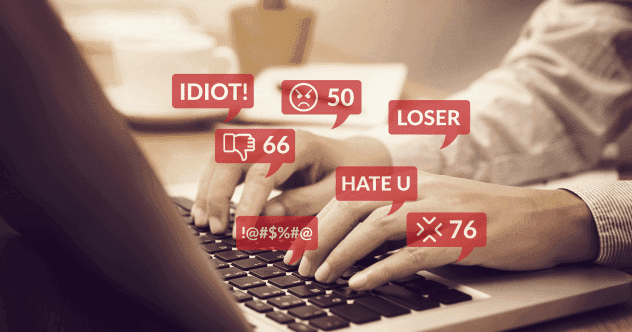Let’s dive into a concerning aspect of our digital age: social media crimes. It’s a harsh reality that with the rise of social media platforms, criminal activities have also found a breeding ground online.
From cyberbullying to identity theft, these crimes come in various forms, impacting individuals and communities alike. Think of it as the internet’s dark side, where some try to get away with harmful behavior. Fortunately, these cybercrimes are getting more attention, so let’s explore 10 common ones and how we can improve our online world.
Cyberbullying
Cyberbullying is a distressing social media crime with serious consequences. Bullies use hurtful comments, spread rumors, or publicly shame others, exploiting the internet’s connectivity to harm their victims.
The effects go beyond immediate emotional distress, leading to lasting psychological trauma and decreased self-esteem. Recognizing cyberbullying as a crime is vital for holding offenders accountable and protecting online well-being.
Monitoring online activities, removing harmful content quickly, and taking legal action can deter and punish cyberbullying. Educational programs promoting digital literacy and responsible online behavior are also essential for fostering empathy and respect.
Cyberstalking
Imagine someone obsessively tracking your every move online, invading your privacy without your knowledge. That’s cyberstalking, a social media crime that’s become all too common.
Cyberstalkers use social media to harass, intimidate, and control their victims. They might send endless messages, stalk profiles, or use fake accounts to get information and control. The psychological impact is profound, causing anxiety and a constant sense of violation.
Raising awareness and educating users is crucial, while social media platforms must improve security and reporting. Law enforcement plays a key role in investigating and prosecuting cyberstalkers, ensuring they face the consequences.
Catfishing
This crime involves creating fake identities to deceive and manipulate others online. It’s a virtual game where the catfisher lures victims into a web of lies.
They might use stolen photos, create elaborate stories, or start fake romantic relationships, hiding their true intentions. The emotional impact on victims is significant as they invest time, trust, and hearts into these false relationships.
To combat catfishing, empower individuals with knowledge, online safety tips, and critical thinking skills. Stricter verification processes and monitoring of suspicious accounts by social media platforms are vital.
Sextortion
Sextortion is a particularly insidious social media crime. It involves coercing or blackmailing individuals to provide explicit content or engage in sexual activities through social media.
Predators use manipulation to gain trust and then use personal information or compromising images against their victims. The emotional and psychological impact is immense, forcing victims into fear and vulnerability.
Educating people, especially young people, about online safety and the risks of sharing explicit content is crucial. Social media platforms must strengthen security measures and law enforcement must investigate and apprehend offenders.
Swatting
Swatting involves making false emergency reports to trigger a large-scale response from law enforcement. Swatters manipulate emergency services, leading to dangerous deployments.
The consequences are far-reaching, making innocent individuals victims of a terrifying ordeal. It’s a criminal act that risks lives and burdens emergency services.
Addressing swatting starts with awareness and education about the consequences. Social media platforms must quickly remove accounts involved in swatting, and collaboration between companies and law enforcement can expedite investigations. Stricter penalties can also deter potential swatters.
Doxing
Doxing involves intentionally exposing someone’s personal information, like their address or phone number, without their consent. It’s often done to harass or intimidate the victim.
Perpetrators use social media to share sensitive information, exposing victims to dangers like stalking and identity theft. It’s a privacy invasion with lasting repercussions.
Education campaigns are vital for informing people about online risks and maintaining digital privacy. Social media platforms must detect and remove doxing content, and legal frameworks must recognize doxing as a criminal offense.
Flash Robs
Flash robs involve organizing large groups through social media to coordinate thefts or vandalism. These events happen spontaneously, causing chaos before participants disperse quickly.
Social media enables rapid coordination, and the impact extends beyond criminal activities, leading to property damage and fear within communities.
Police departments must monitor social media for signs of planned flash robs and social media platforms must have policies to remove content promoting criminal behavior. Community awareness campaigns can educate individuals about the consequences of participating.
Child Exploitation
Child exploitation is a heinous crime involving the production and distribution of abusive material involving minors through social media. Predators exploit the internet to groom and manipulate children.
The consequences are devastating, leading to severe emotional trauma and loss of trust. It’s a chilling reminder of social media’s dark side, and the urgent need to protect children.
Law enforcement must prioritize investigating offenders, working with internet providers and social media platforms to remove illegal content. Educational programs must empower children with knowledge about online safety, and platforms must detect and remove child exploitation material.
Digital Art Theft
Digital art theft involves the unauthorized reproduction and distribution of digital artwork without the artist’s consent. Social media platforms have become hotspots for sharing art, but also for theft.
This undermines the value and originality of the artwork and deprives artists of recognition and compensation.
Combating this requires effort from artists, platforms, and users. Artists can use watermarks, while platforms should enhance copyright detection and provide reporting mechanisms. Users are responsible for respecting artists’ rights.
Identity Theft
Identity theft is a significant social media crime. Thieves exploit the abundance of personal information on social media to assume someone else’s identity and commit fraud.
The consequences for victims can be devastating, including financial loss and damaged credit scores.
Individuals must protect their personal information by managing privacy settings and being cautious about sharing details. Social media platforms must enhance security measures and investigate suspicious accounts. Law enforcement plays a crucial role in prosecuting identity theft cases.
Social media has unfortunately become a landscape for various criminal activities. From cyberbullying to identity theft, the risks are real. However, by staying informed, practicing online safety, and demanding better security from platforms, we can create a safer digital world for everyone.
What steps do you take to protect yourself on social media? Share your thoughts in the comments below!










